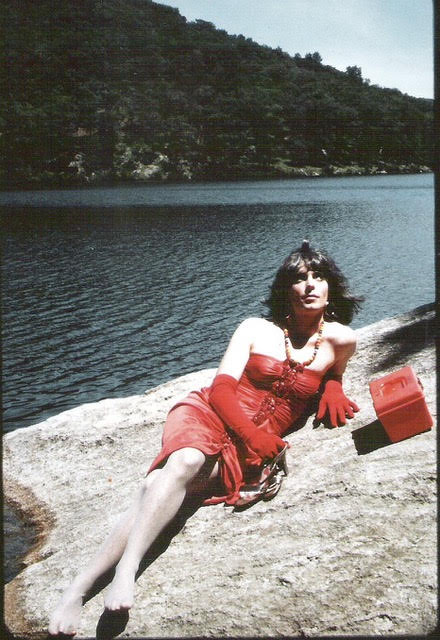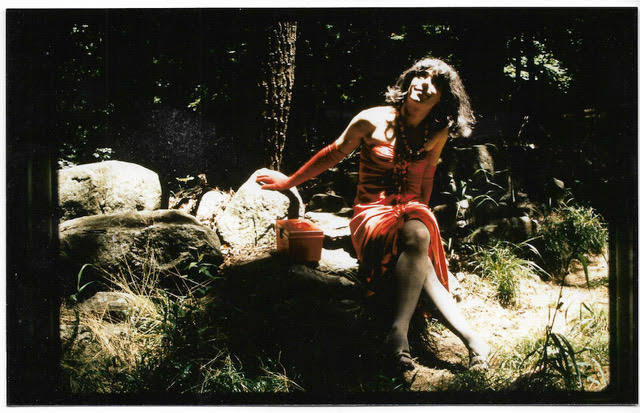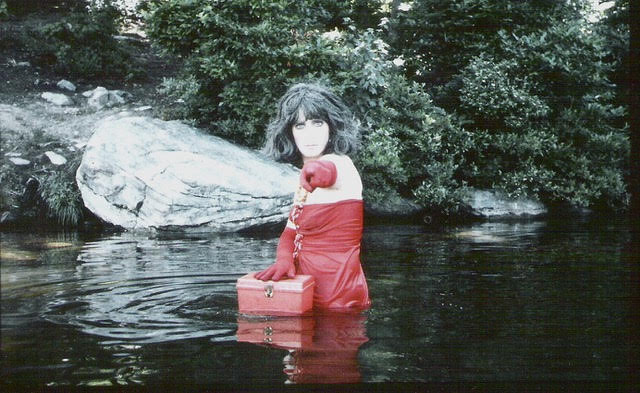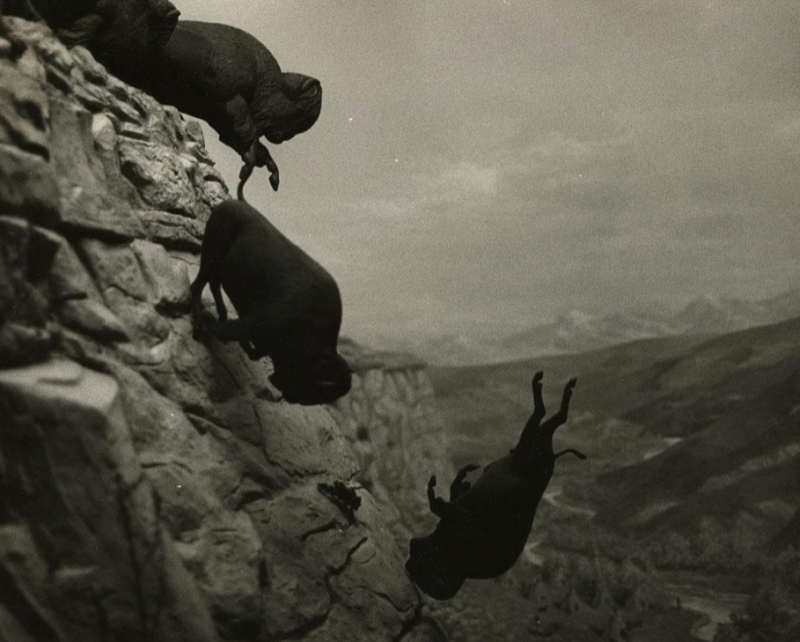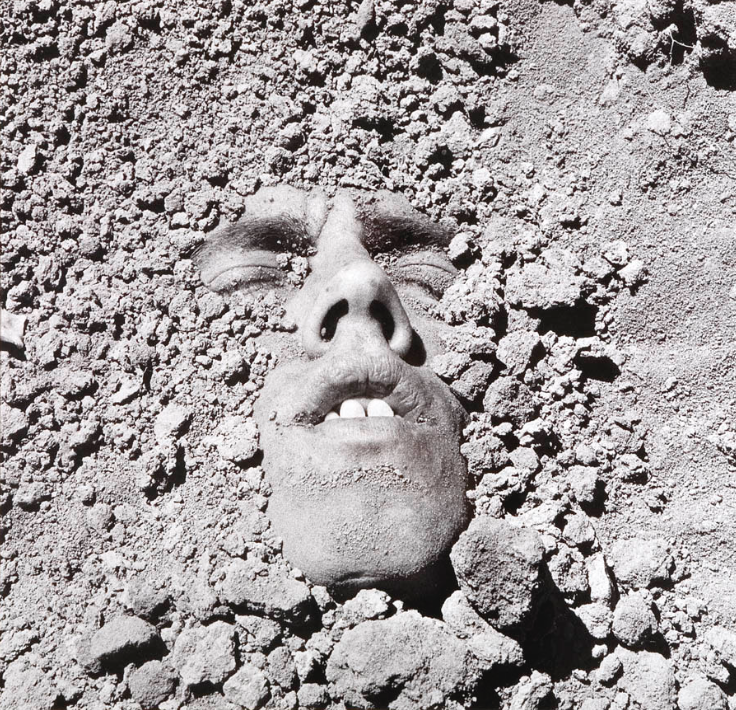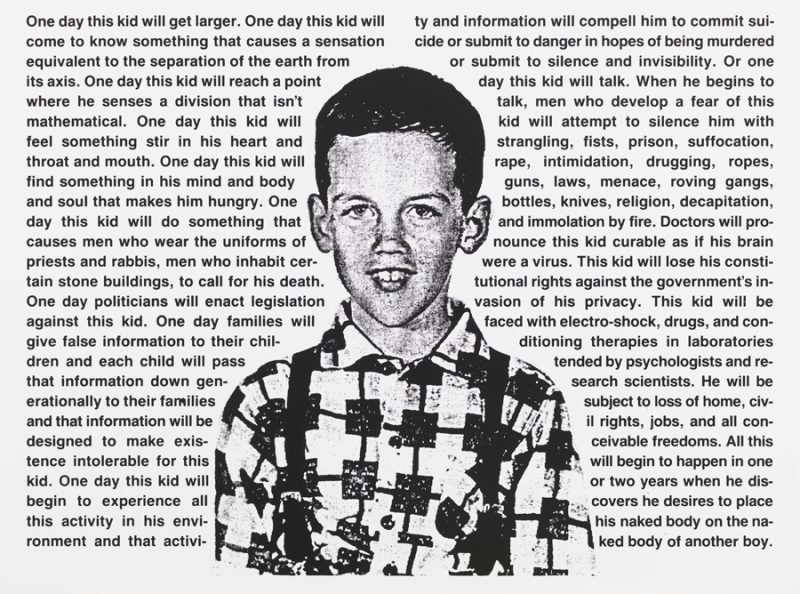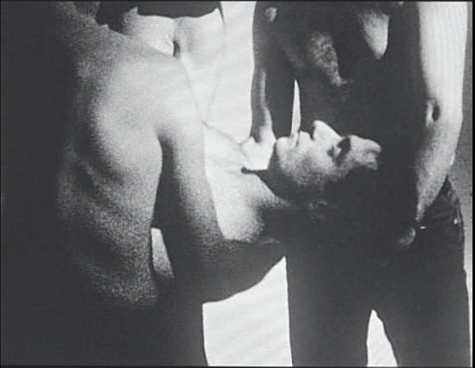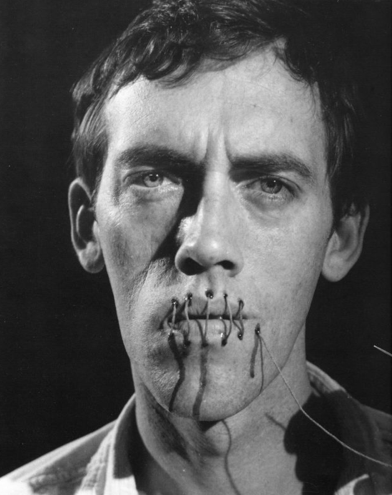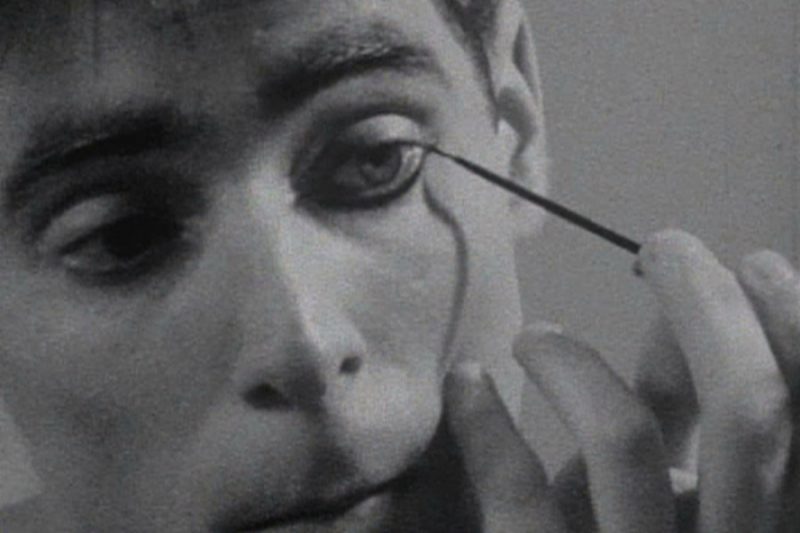Authentic Photographs by David Wojnarowicz 1954-1992
Set of three authentic & rare color photographs by David Wojnarowicz (1954 – 1992). All three photos are exactly the same size. Two are horizontal and the other vertical. All slightly under 5 inches (12.5 cms) by slightly under 8 inches (20 cms). On the back they both have the printed words ‘ILFORD’ then underneath ‘CIBACHROME’ in a regular pattern. Nothing written by hand on the photos (not dated nor signed). Photographs are in excellent condition. All authentic photographs come with Certificate of Authenticity by P.P.O.W. Gallery in New York, who currently deals with the estate of David Wojnarowicz.
Currently being appraised & On Hold.
Provenance:
The subject in the photographs are portraits of long time friend, art film collaborator & ‘3 Teens Kill 4′ band member Jesse Hultberg who was featured in all of David Wojnarowicz’ films. The photos were taken by David Wojnarowicz with a camera in 1988 during the shoot of ‘Beautiful People’, on location in the Lower East Side, NY & Turkey Lake in Harriman State Park. These images are not film stills, but were taken during breaks in the film shoot. No other copies are known to exist.
‘Beautiful People’ by David Wojnarowicz
https://www.youtube.com/watch?v=G6BvCaTpaAw
COMING SOON:
The documentary called WOJNAROWICZ by World of Wonder (RuPaul’s drag race) is coming out August 2020. All of the music in the documentary is 3 Teens Kill 4; the band cofounded with David Wojnarowicz, Brian Butterick & Jesse Hultberg.
Interview with Jesse Hultberg 2005.
http://www.queermusicheritage.com/may2005s.html
Films reflect impact made by activist and artist David Wojnarowicz
David Wojnarowicz (September 14, 1954 – July 22, 1992) was a painted, photographer, writer, filmmaker, performance artist, and activist who was prominent in the New York City art world of the 1980s.
Wojnarowicz was born in Red Bank, New Jersey in 1954. The product of an extremely difficult childhood brought on by an abusive family life and an emerging sense of his own homosexuality, Wojnarowicz dropped out of high school and was living on the streets by the age of sixteen. He turned to hustling in Times Square. After hitchhiking many times across the U.S. and living for several months in San Francisco and Paris, he settled in New York’s East Village in 1978.
Many of Wojnarowicz’ works incorporate outsider experiences drawn from his personal history and from stories he heard from the people he met in bus stations and truck stops while hitchhiking. By the late 1970s he had, in his own words, “started developing ideas of making and preserving an authentic version of history in the form of images/writings/objects that would contest state-supported forms of ‘history.'” In such diverse works as Sounds in the Distance (1982), a collection of monologues from “people who lived and worked in the streets” and The Weight of the Earth, Part I & II (1988), an arrangement of black-and-white photographs taken during his travels and life in New York, Wojnarowicz continually returned to the personal voices of individuals stigmatized by society.
A member of the first wave of East Village artists, Wojnarowicz began showing his work during the early 1980s in such now-legendary spaces as Civilian Warfare, Club 57, Gracie Mansion, Fashion Moda, and the Limbo Lounge. He gained prominence through his inclusion in the 1985 Whitney Biennial, and was soon showing in numerous museum and gallery exhibitions throughout the United States, Europe and Latin America.
In the late 1980s, after he was diagnosed with AIDS, Wojnarowicz’ art took on a sharply political edge, and soon he was entangled in highly public debates about medical research and funding, morality and censorship in the arts, and the legal rights of artists. Wojnarowicz challenged the nature of pubic arts funding at the National Endowment for the Arts, and initiated litigation against the American Family Association of Tupelo, Mississippi, an anti-pornography political action group that Wojnarowicz accused of misrepresenting his art and damaging his reputation. He won the lawsuit.
Wojnarowicz died of AIDS-related illness in New York City in 1992, at the age of 37. He is the author of five books. His artwork is in numerous private and public collections including the Museum of Modern Art, New York, and the Whitney Museum of American Art. The Estate of David Wojnarowicz represented by PPOW.
RESEARCH:
A FIRE IN MY BELLY: THE FILMS OF DAVID WOJNAROWICZ
1 Minute 1 Work: Beautiful People
https://www.gallerieswest.ca/magazine/stories/david-wojnarowicz/
MORE INFO:
|
David Wojnarowicz
|
|
|---|---|

David Wojnarowicz, from the book Fire in the Belly: The Life and Times of David Wojnarowicz
|
|
| Born | September 14, 1954 |
| Died | July 22, 1992 (aged 37) |
| Cause of death | AIDS |
| Nationality | American |
David Michael Wojnarowicz (September 14, 1954 – July 22, 1992) was a Polish-American painter, photographer, writer, filmmaker, performance artist, songwriter/recording artist and AIDS activist prominent in the East Village art scene. He incorporated personal narratives influenced by both his struggle with AIDS as well as his political activism in his art until his death from the disease in 1992.
Biography
Wojnarowicz was born in Red Bank, New Jersey, where he and his siblings survived a childhood of physical abuse at the hands of their father. After his parents’ divorce, he moved to New York with his mother as a teenager. During his teenage years in Manhattan, Wojnarowicz worked as a street hustler around Times Square. He graduated from the High School of Music and Art in Manhattan.
After a period outside New York, he returned in the late 1970s and quickly emerged as one of the most prominent and prolific members of an avant-garde wing that used mixed media as well as graffiti and street art. His first recognition came from stencils of houses afire that appeared on the exposed sides of buildings in the East Village.
Wojnarowicz made super-8 films, such as Heroin, and Beautiful People with Jesse Hultberg, completed a 1977-1979 photographic series on Arthur Rimbaud, did stencil work; collaborated in the band 3 Teens Kill 4, which released the independent EP (music) No Motive in 1982. He exhibited his work in well-known East Village galleries and New York City landmarks, notably Civilian Warfare, Ground Zero Gallery NY, Public Illumination Picture Gallery, Gracie Mansion and Hal Bromm.
Wojnarowicz was also connected to other prolific artists of the time, appearing in or collaborating on works with artists incluing Nan Goldin, Peter Hujar, Luis Frangella, Karen Finley, Kiki Smith, Richard Kern, James Romberger, Marguerite Van Cook, Ben Neill, Marion Scemama and Phil Zwickler. In 1987 his longtime mentor and lover, the photographer Peter Hujar, died of AIDS, and Wojnarowicz himself learned that he was HIV positive.[4] Hujar’s death moved Wojnarowicz to create much more explicit activism and political content, notably around the injustices, social and legal, inherent in the response to the AIDS epidemic.
In 1985, he was included in the Whitney Biennial‘s so-called Graffiti Show. In the 1990s, Wojnarowicz sued and successfully issued an injunction against Donald Wildmon and the American Family Association on the grounds that Wojnarowicz’s work had been copied and distorted in violation of the New York Artists’ Authorship Rights Act.
His works include: Untitled (One Day This Kid…); Untitled (Buffalo); Water; Birth of Language II; Untitled (Shark), Untitled (Peter Hujar); Tuna; Peter Hujar Dreaming/Yukio Mishima: St. Sebastian; Delta Towels; True Myth (Domino Sugar); Something From Sleep II; Untitled (Face in Dirt); and I Feel a Vague Nausea among others.
He was also the author of several successful books, often about political and social issues of the 1980s relating to the AIDS epidemic. One of his bestsellers, Close to the Knives: A Memoir of Disintegration, is an autobiography made up of creative writing discussing topics such as his troubled childhood, becoming one of the most renowned artists of his time in New York City, and his AIDS diagnosis. Knives opens with a visceral essay about his homeless years: a boy in glasses selling his skinny body to the paedophiles and creeps who hung around Times Square. The heart of Knives is the title essay, which deals with the sickness and death of the photographer Peter Hujar, Wojnarowicz’s one-time lover, his best friend and mentor, “my brother, my father, my emotional link to the world”. In the final, gargantuan essay, “The Suicide of a Guy Who Once Built an Elaborate Shrine Over a Mouse Hole”, he investigates the suicide of a friend, mixing his own reflections with interviews with members of their shared circle.
Wojnarowicz died in his Manhattan home on the night of July 22, 1992, from what his boyfriend, Tom Rauffenbart, confirmed was AIDS. After his death, photographer and artist Zoe Leonard, who was a friend of Wojnarowicz, exhibited a work inspired by him, entitled “Strange Fruit (for David)”.
3 Teens Kill 4
History:
In 1980, Brian Butterick, Jesse Hultberg and David Wojnarowicz worked as busboys at New York City’s Danceteria on West 37th street, before the club was closed down for not having a liquor license. The Danceteria staff party was held at TR3 in Soho in December, 1980, and was 3 Teens Kill 4 No Motive’s first performance. The poet Max Blagg chose the name from a New York Post headline, and performed with them along with others from Danceteria.
Julie Hair joined the band for their 3rd show adding her rhythm machine making 3 Teens Kill 4 a stripped-down, 4-person ensemble. The band’s signature style of found-sounds played on hand-held tape recorders, toy instruments, spoken word and multi-vocals, in a pop music context took shape. The low-tech tape sounds achieved the same results as sampling, and tape-looping, which were just starting to enter the pop music genre.
As the band’s only released album was getting started, the inclusion of Doug Bressler expanded the instrumentation to actual guitars as well as toys and Casios. Guitar, bass, keyboard, percussion, tape players, and toys were passed around on stage. Clarinet and flute were also used as was a microphone sewed into a glove, and a can of Beans. The band’s performances had an anarchic intensity that relied on ambiance, and surprising sounds, more than actual music.
In 1982, Alan Mace and Bobby Bradley, the managers of the Pyramid club, financed the self-titled, independently released album, 3 Teens Kill 4 No Motive. A cover of Chaka Kahn‘s Tell Me Something Good (written by Stevie Wonder), included the newscast of the attempted assassination of Ronald Reagan. 3 Teens Kill 4’s deconstructed version was typical of the harsh, reality-based attitude in their songs. Apart from rock clubs, they performed in non-rock venues such as the Civilian Warfare Gallery, Wigstock, and White Columns. The East Village, Manhattan was in its heyday of art and music.
In 1983, Wojnarowicz left the band pursuing visual art, writing and film-making. He continued to collaborate on various projects with the members of 3 Teens Kill 4 before his death in 1992.
In 1984, Bill Gerstel joined the ranks and for the first time the band had a drummer. They continued recording and performing for the next 3 years sharing the stage with a long list of artists from this era. DNA, James Chance, Bush Tetras, Soundgarden, Wall of Voodoo, Glenn Branca, Sonic Youth, ESG, Certain General, The Del-Byzanteens, Suicide, and Madonna. The band dispersed in 1987. All of the members continued writing, performing, producing art and recording.
3 Teens Kill 4 reunited in 2010 at the Mudd Club/Club 57/New Wave Vaudeville show at New York’s Delancey Street Lounge. That night included the Bush Tetras, Tish and Snooky, The Comateens and Richard Lloyd from Television.
In 2011, a multi-media show of music, dance, film, slides and live art called In Peace & War: 3 Teens Kill 4 had 3 nights at New York’s HOWL Festival. The band was joined on stage by choreographer Ishmael Houston-Jones and Antony of Antony and the Johnsons along with numerous other artists, dancers and singers. The rarely seen film Beautiful People by Wojnarowicz was screened.
In 2016, Bill Gerstel, the band’s very human drummer, died after a long battle with cancer.
In 2018, the re-released album 3 Teens Kill No Motive was included as a sound installation at the Whitney Museum’s retrospective for David Wojnarowicz called History Keeps Me Awake At Night. The exhibit continued in 2019 in Europe.
The band did their last performance on September 26th, 2018 for the closing of History Keeps Me Awake At Night at the Whitney Museum of American Art.
Beloved co-founder Brian Butterick (aka Hattie Hathaway) died on January 30th 2019 after a 6-month battle with lung cancer.
Members
- Doug Bressler
- Brian Butterick (1956-2019)
- William Gerstel (1951-2016)
- Julie Hair
- Jesse Hultberg
- David Wojnarowicz (1954-1992)
MORE RESEARCH:
https://www.newyorker.com/culture/photo-booth/david-wojnarowiczs-still-burning-rage
https://whitney.org/exhibitions/davidwojnarowicz?section=6&subsection=1#exhibition-artworks
https://www.theguardian.com/artanddesign/2018/jul/13/david-wojnarowicz-exhibitions-whitney-museum
https://frieze.com/article/why-has-whitney-tried-sanitize-david-wojnarowicz
https://www.anothermag.com/art-photography/11474/david-wojnarowicz-photography-film-exhibition-kw-institute-art-berlin-2019
https://visualaids.org/artists/david-wojnarowicz
